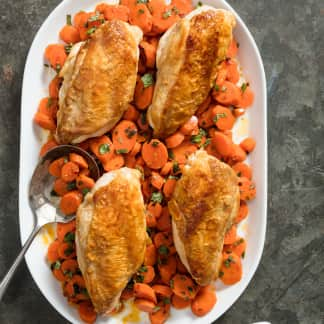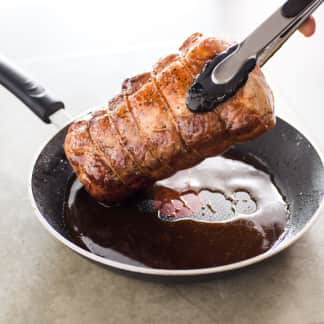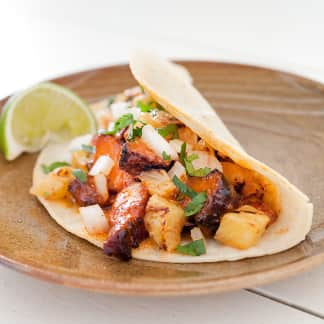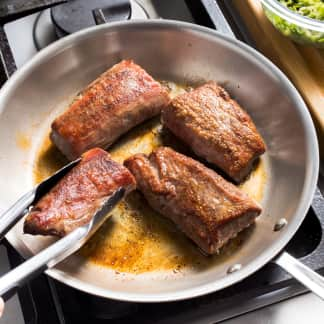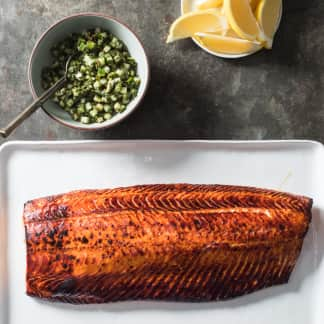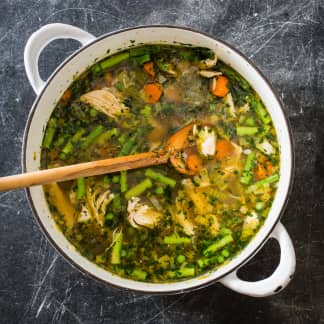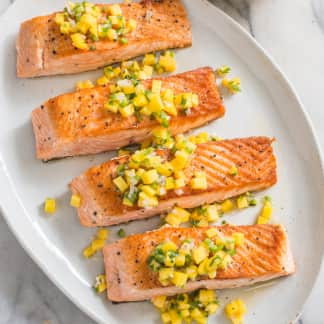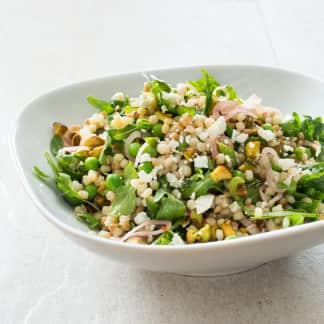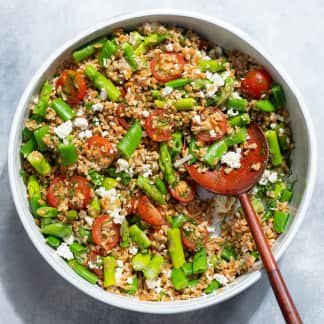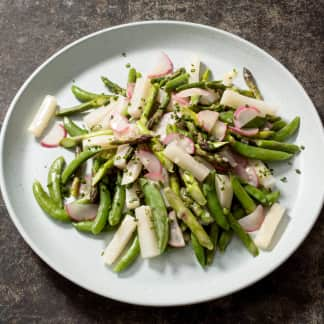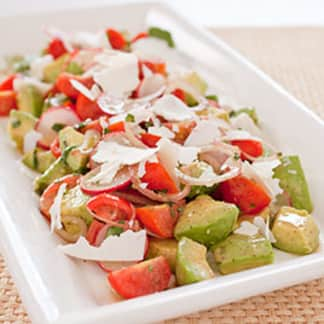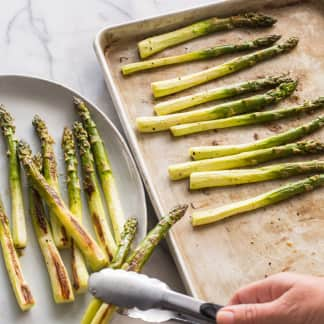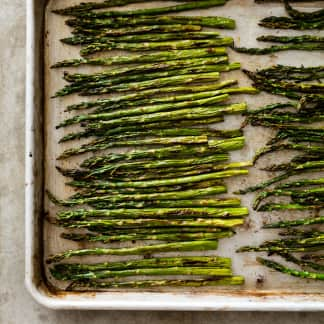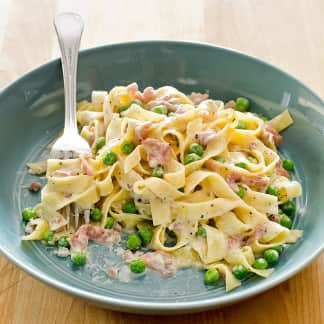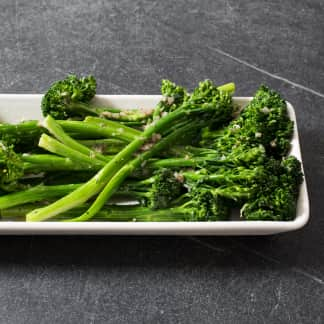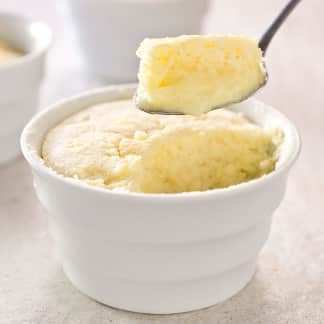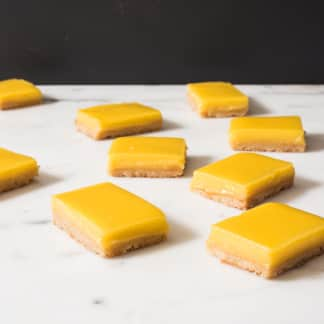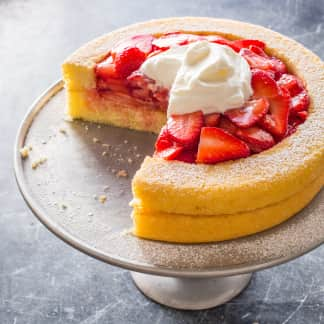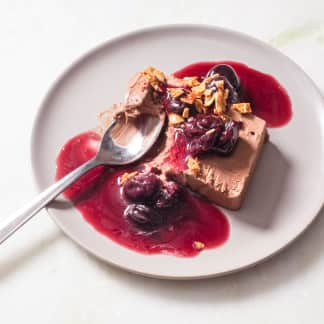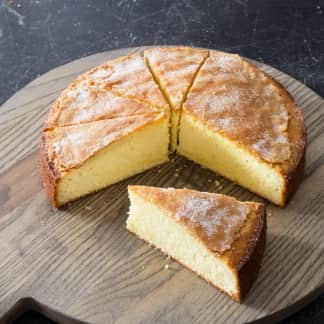Our foolproof method for a perfectly moist spiral-sliced holiday ham starts with a bone-in ham, preferably shank-end because they contain less gristle and fat and are easier to carve than butt-end hams. Here's a step-by-step guide on how to carve a ham for perfect, celebratory-worthy slices.
Sign up for the Cook's Insider newsletter
The latest recipes, tips, and tricks, plus behind-the-scenes stories from the Cook's Illustrated team.
Essential Equipment to Carve a Ham
To carve a ham like a pro, you'll need a few pieces of equipment.
Paring Knife
A paring knife allows you to nimbly cut around the bone to loosen the attached slices. A paring knife's diminutive size makes it more maneuverable and better able to hug curves than bigger knives (such as a chef's knife), so we reach for a paring knife when control is paramount.
Learn more in our review of paring knives.

Victorinox Swiss Army Spear Point Paring Knife
The blade on this paring knife is sharp, thin, and nimble as ever, and it’s capable of making ultraprecise slices and incisions. Its plastic handle is easy to grip and accommodates large and small hands easily.
Buy NowSlicing Knife
A long knife is ideal for slicing the meat horizontally above the bone and through the spiral-cut slices, towards the back of the ham. We prefer the Granton edge (scalloped divots) for cutting even slices.
Learn more in our review of slicing knives.

Victorinox Swiss Army 12” Granton Slicing Knife
Our previous winner turned in another gold medal performance: “Every slice is perfect,” said one tester. It was comfortable and sharp, with a long, tall blade that was “just flexible enough so you feel like it’s doing what you tell it to.”
Buy NowCarving Fork
When slicing meat, a carving fork is the best option for holding the roast firmly in place while keeping your hand out of harm’s way. We like carving forks that are curved, with prongs that follow the shape of a roast.
Learn more in our review of carving forks.

Mercer Culinary 6-Inch High-Carbon Carving Fork
The sharp, V-shaped prongs of this curved carbon steel fork held firmly to roasts while staying out of the knife’s way, worked well for transferring slices to a platter, and didn’t bend when lifting or turning roasts. Its rounded nonslip rubber handle felt secure and comfortable.
Buy NowCarving Board
A carving board is a necessary upgrade from a cutting board since it boasts a trench that traps liquid from a juicy roast. It also should be durable, handsome, and easy to clean.
Learn more in our review of carving boards.

J.K. Adams Maple Reversible Carving Board
Our longtime favorite boasts trenches on both sides that easily accommodate 1/2 cup of liquid. One side provides uninterrupted cutting space, while the other features a poultry-shaped well that steadied turkeys during carving but didn’t obstruct our knife.
Buy NowHow to Carve a Ham
Despite the name, spiral-sliced hams are not fully sliced. Here’s how we neatly finish the job of freeing the cooked slices from the bone.
Step 1: Cut Around the Bone

With the ham on its side, cut around the bone with a paring knife to free the attached slices.
Step 2: Remove the Top Section

Switch to a carving knife and slice horizontally above the bone to remove the entire section.
Step 3: Slice Along the Bone

Turn the ham to cut side down and slice down along the bone to remove the remaining meat.
Step 4: Separate the Slices

Carefully cut between the slices to separate them.

How To Roast Everything
How to Roast Everything is the first cookbook from America’s Test Kitchen devoted to the art and science of roasting, pulling together decades of test kitchen experience and knowledge to help you roast everything from meat and fish to vegetables and fruit.
Buy NowWatch our test cook take you through the steps of carving a ham.



